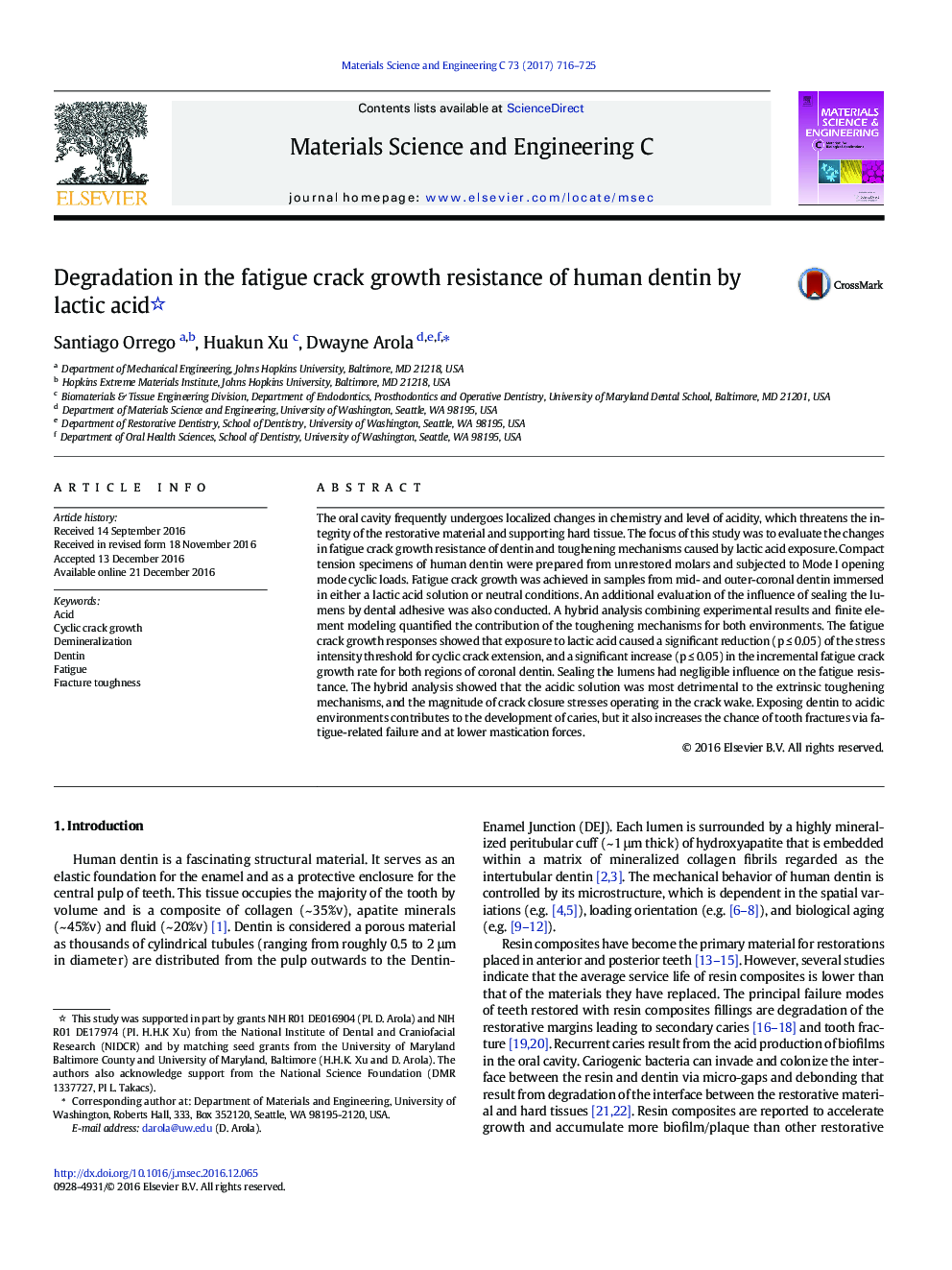| Article ID | Journal | Published Year | Pages | File Type |
|---|---|---|---|---|
| 5434980 | Materials Science and Engineering: C | 2017 | 10 Pages |
Abstract
The oral cavity frequently undergoes localized changes in chemistry and level of acidity, which threatens the integrity of the restorative material and supporting hard tissue. The focus of this study was to evaluate the changes in fatigue crack growth resistance of dentin and toughening mechanisms caused by lactic acid exposure. Compact tension specimens of human dentin were prepared from unrestored molars and subjected to Mode I opening mode cyclic loads. Fatigue crack growth was achieved in samples from mid- and outer-coronal dentin immersed in either a lactic acid solution or neutral conditions. An additional evaluation of the influence of sealing the lumens by dental adhesive was also conducted. A hybrid analysis combining experimental results and finite element modeling quantified the contribution of the toughening mechanisms for both environments. The fatigue crack growth responses showed that exposure to lactic acid caused a significant reduction (p â¤Â 0.05) of the stress intensity threshold for cyclic crack extension, and a significant increase (p â¤Â 0.05) in the incremental fatigue crack growth rate for both regions of coronal dentin. Sealing the lumens had negligible influence on the fatigue resistance. The hybrid analysis showed that the acidic solution was most detrimental to the extrinsic toughening mechanisms, and the magnitude of crack closure stresses operating in the crack wake. Exposing dentin to acidic environments contributes to the development of caries, but it also increases the chance of tooth fractures via fatigue-related failure and at lower mastication forces.
Related Topics
Physical Sciences and Engineering
Materials Science
Biomaterials
Authors
Santiago Orrego, Huakun Xu, Dwayne Arola,
